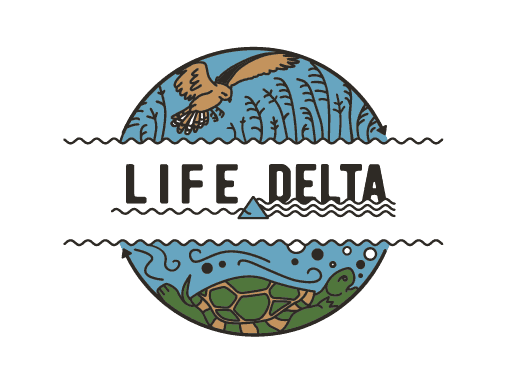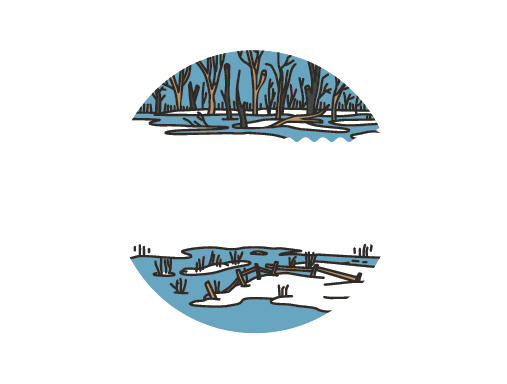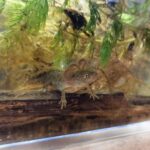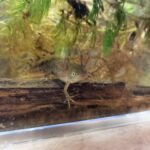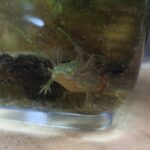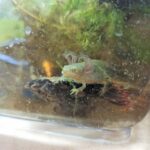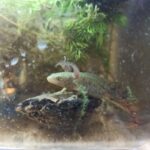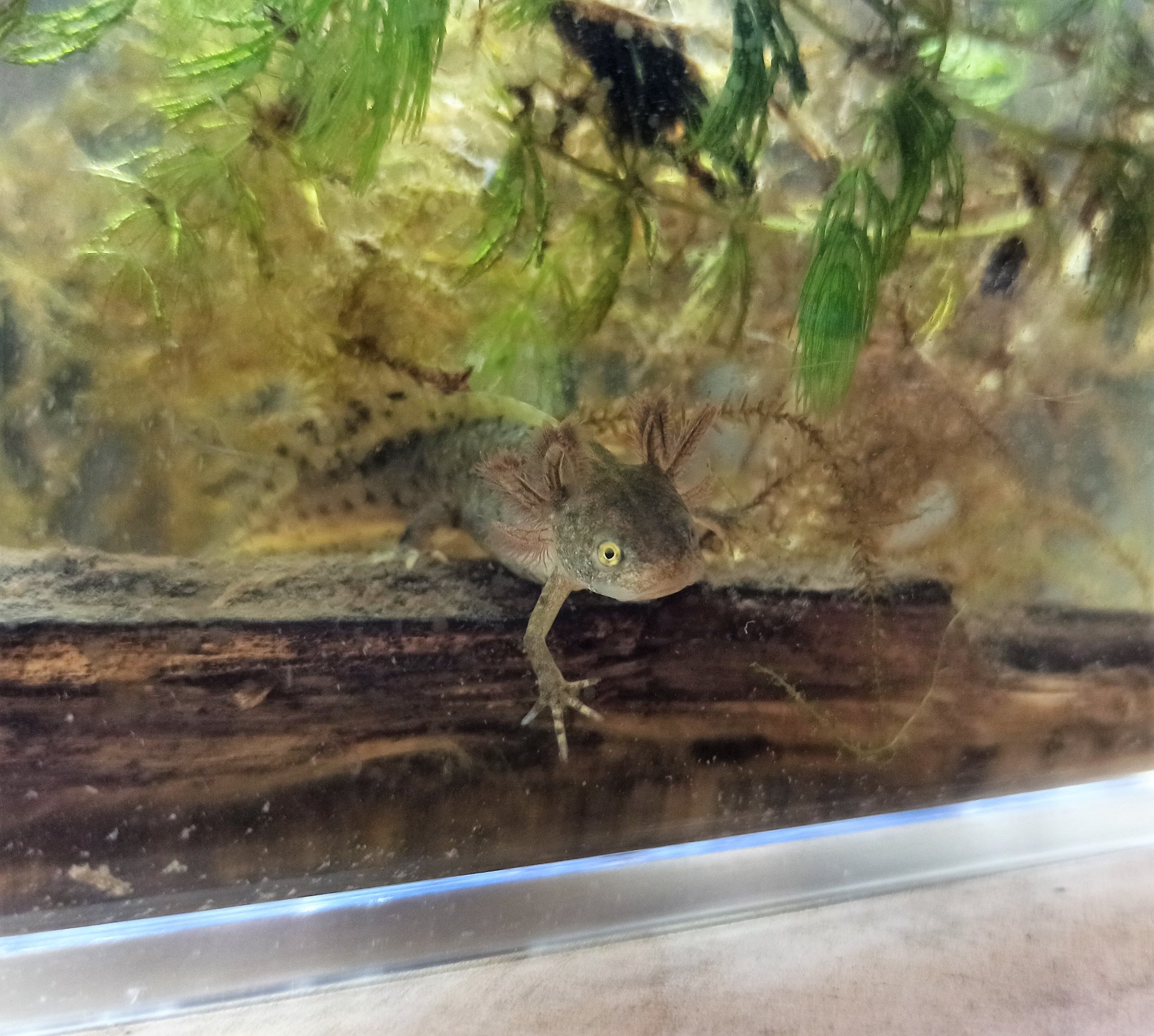
12 Aug A year from great crested newt life.
The great crested newt is one of the species under active protection under the Life4Delta project.
The animal begins its activity in late March and early April, when the soil thaws.
It makes its way to suitable shallow and overgrown bodies of water.
In the skin of the dorsum of newts there are glands that produce scent substances specific to sex and species to attract a mate. After the meeting of representatives of 2 sexes under the surface of the lake, a very interesting spectacle takes place . The male, in order to charm his chosen one, performs ” a specific water dance ” while flexing the comb used outside the reproductive period to increase the respiratory surface of the body .
In the next stage, a discerning observer of nature may observe “green packets,” these are individually laid eggs wrapped by the female in the leaves of aquatic plants. After about two weeks, 10 mm long larvae hatch from the eggs.
As in all our caudal amphibians in development, the front limbs appear first, followed by the hind limbs. In this stage, the young newt stays about 3 months, depending on the conditions in the tank.
At the moment, a discerning observer can already see individuals that are close in appearance to the mature form. After their recent metamorphosis, they are becoming the most beautiful and largest tailed amphibians in Ponidzie.
Text: Dariusz Wiech
Photos: Robert Pisarczyk (great crested newt larvae just before reaching maturity)
